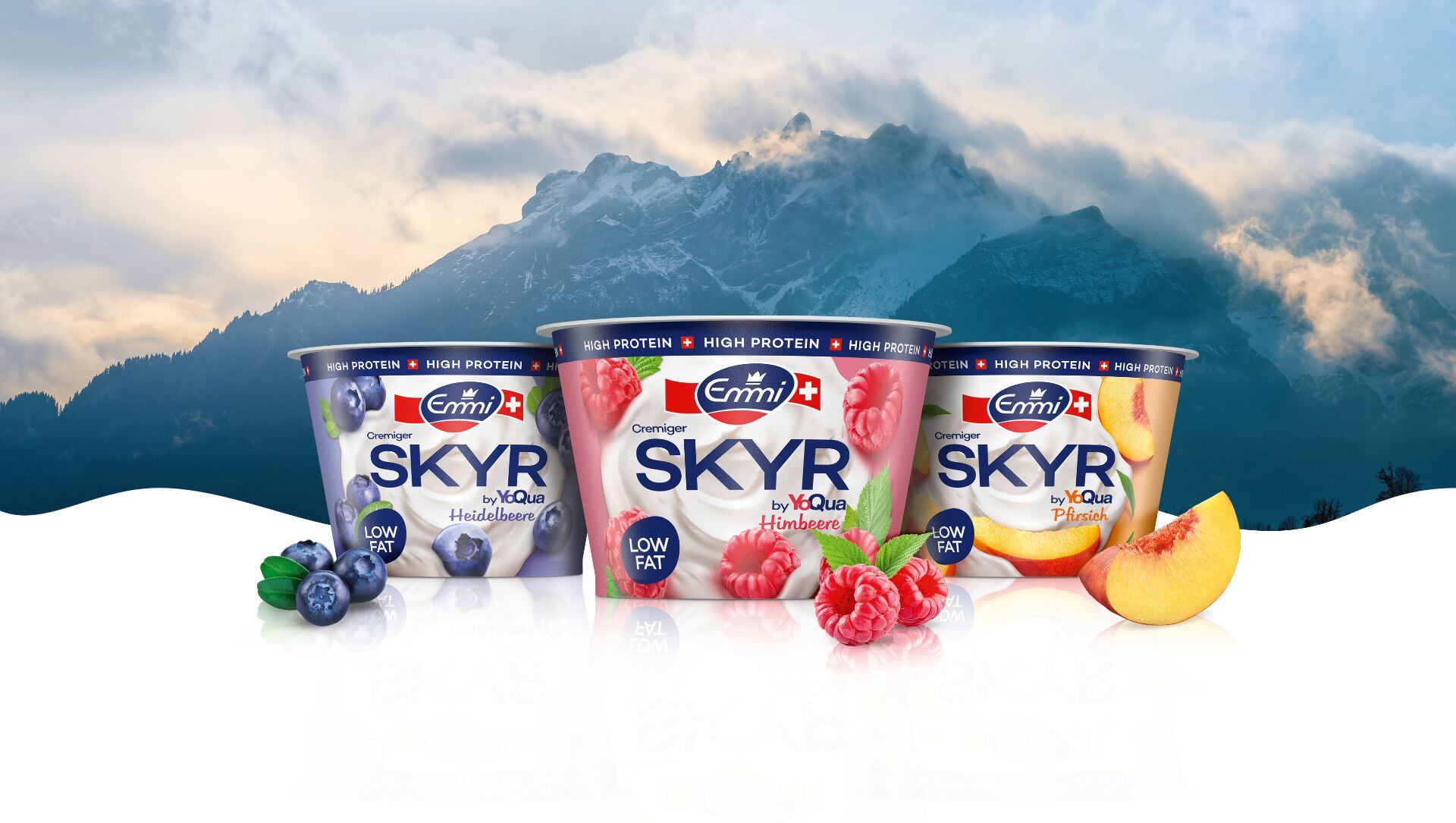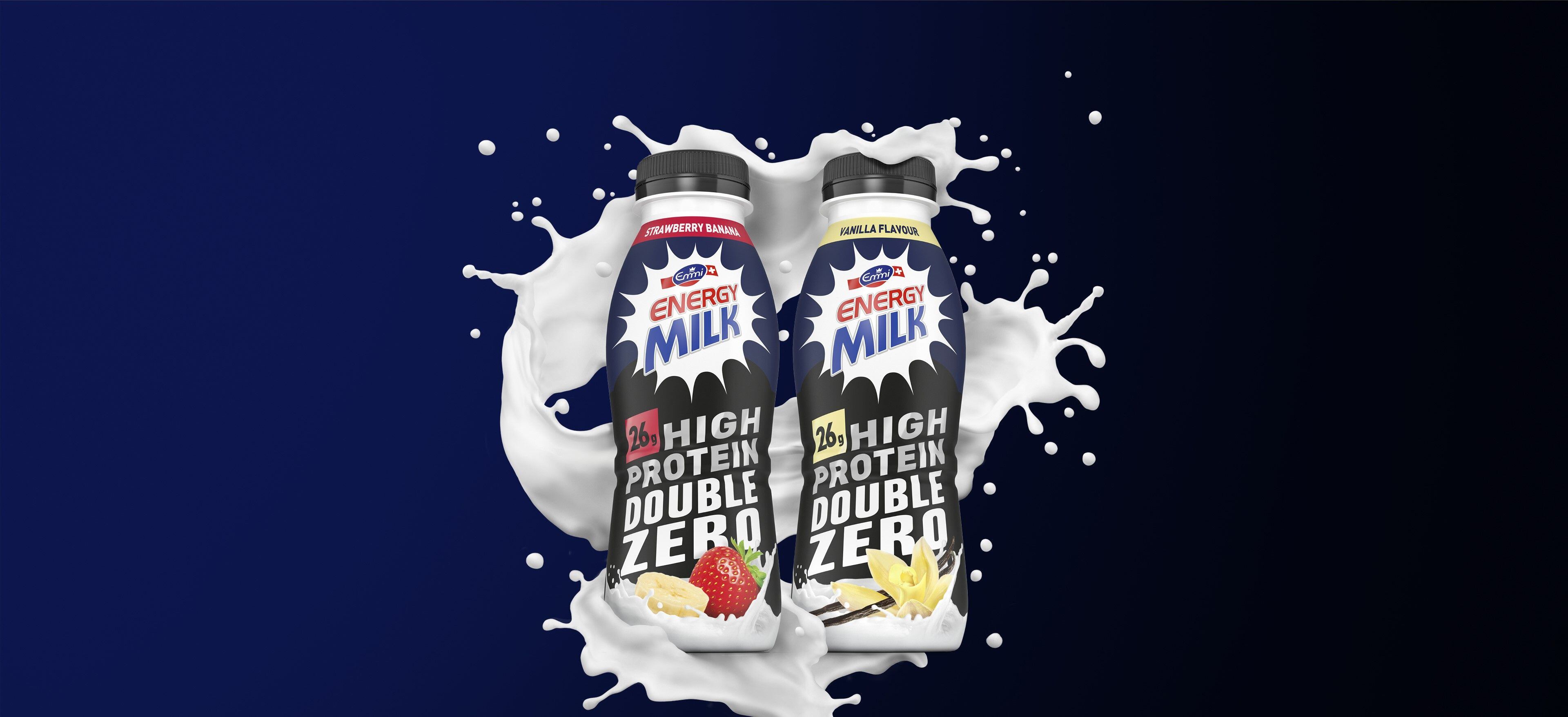On a recent visit to Emmen, Switzerland, DairyReporter heard from Emmi Group head of R&D Günter Englmeier about creating all-natural yogurts for the company’s Onken brand; why protein-rich dairy is here to stay, and what the future of yogurt and milk beverages looks like.
“We want to innovate fast, following trends that are in growth,” Englmeier said. “Global trends inform our innovation pipeline. These are around holistic health – to do with gut health, active fit, where cultured dairy plays a role. Then, there’s casual consumption such as snacking, and there’s a huge range of plant-based products; from milk to cheese alternatives.”
Balanced indulgence is a key overarching priority, he explained, as is sugar reduction and protein content. Coffee is another major area for the company that produces ready-to-drink iced coffee brand, Emmi Caffe Latte – more on that later.
In protein, the Swiss dairy firm has pushed out a range of beverage and yogurt-based products, including Emmi Energy Milk, which packs 26g of protein per serving; a protein-packed Skyr by YoQua line, and a high-protein variant of Emmi Caffe Latte, among others. “The development that has happened on whey proteins over the last 20 years is, in my eyes, phenomenal,” Englmeier told us. “You can do a lot with whey – and it’s abundant in acid whey [a by-product from cheese production that used to be discarded].”

As consumers continue to seek out natural products, there’s a greater imperative on R&D teams to deliver clean label formulations, irrespective of category. For Onken – a yogurt brand the company offers in the UK – fruit for flavored yogurts is harvested in peak season, then frozen so that its sensory properties aren’t impacted. “The color, flavor and scent all come from the frozen fruit,” Emmi’s Nicole Oberortner told us. “We make a fruit puree, add sugar, and blend this with the yogurt. So it’s a very clean label.”
But the all-natural claim comes at a cost. “With natural fruit, we lose a bit of shelf life, which, with artificial flavorings isn’t so much the case,” Oberortner added. “And there’s also the stability of the fruit – with fruit pieces [in yogurt], it’s sometimes difficult to ensure even distribution within the product – but that’s what product trials are for.”
Besides the Onken flavored and plain yogurt ranges – including a new pouch format and a children’s range sold in the UK – Emmi also offers the three-ingredient snacking yogurt range Yogurtpur in Europe.
Bakery-inspired flavors, anyone?
Emmi’s R&D team was tasked with creating an RTD coffee flavor suitable to target Gen Z. A key part of the brief was to make the product that doesn’t take like coffee. How did they pull it off? “The coffee level [in Cinnamon Roll] is very, very low. You hardly detect any coffee smell; it's overpowered by the flavor itself.”
In the scoping phase, the R&D team also played with popcorn as a flavor – but in a liquid, that flavor ‘can get messy’, we learned. Despite the low level of coffee, the drink – available in a single-serve format of 230ml – still packs 30mg of caffeine per cup (comparable to a teaspoon of instant coffee).
The entire process, from ideation to market launch, lasted 15 months – a ‘fairly swift’ turnaround for a brand new subcategory product targeting a specific consumer cohort, according to Englmeier.
Sugar reduction is also high on the agenda. In the UK, one of the company’s main markets, the government recently announced plans to extend its sugar levy to milk-based beverages, such as Emmi Caffe Latte. And in Switzerland, the company is among the signatories of the Declaration of Milan, a voluntary agreement between Swiss food producers and retailers to cut sugar in yogurt by 10% by 2024 and in cereals by 15%; a program now expanded to soft drinks, milk beverages and quark.
Changes to sugar levels are always very incremental, we learned, as to not alienate consumers. Pressure from regulators aside, do shoppers actually prefer the low-sugar stuff? “Yes, consumers actually want this,” Englmeier said. “We reduce sugar levels also because we’ve seen on the market that sugar is going down across the board – including on our other brands. There is a macro trend towards health – whether that’s protein or less sugar or more fiber.”
In cheese alternatives, the company launched a chickpea and pea semi-hard cheese alternative, produced through traditional fermentation techniques to achieve a light umami flavour. “By using vegan bacteria, we produce the desired lactic acid and other aromatic components that are reminiscent of cheese,” according to Nicole Gredig, development project manager. “The addition of chickpeas and peas also gives the product a protein content of 5.5%. This gets us closer to the original cheese and differentiates us from existing products.”
Asked what have been the biggest challenges in food R&D in the last two decades, Englmeier said: “To go as natural as possible. And to make a superior product from dairy components, such as whey proteins and minerals.”
What should the market expect to see in terms of yogurt innovation in the coming years? “Protein is still growing,” he added. “I think there’s much more in dairy cultures that we could leverage in terms of gut health applications, and in fact, beyond the gut and into supporting other health benefits.”

